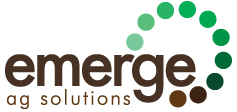The use of certified seed is not a foreign one, but when it comes to cereals, it certainly seems like it might be in Western Canada. While certified seed use is 100 percent in canola, the biggest crop in Western Canada next to wheat, certified seed use in wheat hovers around 20 percent. Certified seed use is 100 percent in soybeans, the fastest growing crop in Western Canada, yet in durum, it’s only 16 percent, according to the Canadian Seed Trade Association. Why the big discrepancy between wheat and canola or soybeans?
The main reason for the low rate of use of certified seed in cereals is that farmers have the right to save and use their own production for seed on their own land. Many farmers buy certified seed of a cereal variety only once and then use farm-saved seed over the next few years until they decide to change varieties.
According to Pam de Rocquigny, cereal crops specialist at Manitoba Agriculture, Food and Rural Initiatives, while farmers are very particular about what varieties they want to grow, they are not as critical about the actual seed itself. “As much thought and attention should be paid to securing top quality seed as deciding what variety to use,” she says. “Seed it is the starting point for maximizing crop production and profitability. Choosing certified seed provides the advantage of the variety’s full genetic potential and for risk management and market access.”
One of the most important keys to success is to get the crop to pop out of the ground fast, vigorously, and evenly. Achieve this and you’ve embarked on the best strategy toward maximizing the yield potential for that season. Applying inputs to a vigorous, healthy crop is far more beneficial than trying to “medicate” a less vigorous crop to harvest.
Farm-saved seed can start losing the key attributes and quality of the variety as it becomes contaminated with other crop types or varieties as well as with weed seeds. Seed grower’s fields are inspected annually for off-types and volunteers. Varieties have to be true to type at each and every inspection. It also has to meet strict quality guidelines to be sold as certified seed. The incremental cost of using certified seed compared to the additional work to clean and use farm saved seed, combined with the peace of mind knowing you are starting with the best possible seed source is a small price to pay.
Farm-saved seed is certainly not free. “Farm-saved seed may look like an attractive option to save on seed costs,” says De Rocquigny. “Pen should be put to paper to determine farm-saved and certified seed costs. For farm-saved seed, take into consideration the costs of storage, cleaning the seed, and trucking costs to and from the cleaning plant.” It really is a false economy to start the crop with anything less than the best possible seed. All the seed treatments, micro-nutrients, and other expensive inputs cannot make up that difference.
Some of the changes to Plant Breeders’ Rights (PBR) legislation that occurred last year do impact farm-saved seed and what farmers can legally do and not do with it. Using farm-saved seed continues to be enshrined in the legislation. However, while it has always been illegal to sell farm-saved seed of varieties protected by PBR, it is now also an infringement of the new legislation to buy farm-saved seed or so-called brown-bagged seed. That means both sellers and buyers are liable for damages they are causing to plant breeders.
De Rocquigny points to another advantage of using certified seed. Kernel visual distinguishability (KVD) has been eliminated in wheat as a registration requirement. Variety declarations were put in place for delivery into the grain-handling system to compensate for the inability to always be able to distinguish a wheat class visually.
“Farmers must declare that the grain delivered is a variety that is eligible for their class and in signing a declaration, farmers become legally responsible to know what variety they are growing and its class eligibility,” she explains. “When using certified seed, farmers can manage the risk of knowing what they are planting as pedigreed seed growers follow regulations to maximize genetic and seed purity. When a producer buys certified seed, it should have an official blue tag, pedigreed documentation (provided from the seller), and a copy of the mechanical purity.”







Leave A Comment